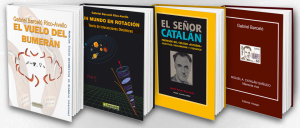MIGUEL A. CATALÁN SAÑUDO (Zaragoza, 1894 – Madrid, 1957)
Miguel Catalán was an eminent Spanish scientific researcher. He began a career as a lecturer and professor of physics and chemistry at the Instituto Escuela de Madrid secondary school, which he combined with his research work at the Physical Research Laboratory of Junta para la Ampliación de Estudios (JAE – Board for Advanced Studies), also in Madrid under the direction of Ángel del Campo. Later, in 1920, he continued his research at the astrophysics laboratories at the Imperial College of Science and Technology in London (formerly the Royal College of Science) under Alfred Fowler.
While studying manganese at the astrophysics laboratories of the Imperial College of Science and Technology in London he discovered that the optical spectrum of complex atoms contained groups of hitherto unknown lines, which he called “multiplets”, among which he identified characteristic regularities. Catalán showed that the study of multiplets brought with it a greater understanding of the energy states of atomic electrons.
The importance of his discoveries is attested to by the fact that the scientific journal Nature published an article by the Indian scientist Megnad Saha in its edition of 28 July 1921 reporting on Catalán’s findings. The fact is that the research of this twenty-seven-year-old scientist had revealed the regularities that characterise the manganese spectrum and a law defining its reiterative behaviour, which enabled him to unravel its spectrum, thus laying down a new pattern of reference. He had, moreover, created a new scientific method: the multiplet, a new tool for spectrochemical analysis, thus paving the way for the interpretation of the spectra of complex elements.
Catalán’s findings provided the experimental test needed by theoretical physicists at the time, such as Sommerfeld and Bohr, to define the definitive model of the atom’s structure: He established a new procedure to interpret spectra that enabled the determination of the existing correlations between the spectrum and the energy level of the electrons orbiting the atom’s nucleus, thus making it possible to identify the energy structure of electrons and the configuration of the atom.
He quickly becomes as of that time an international reference and takes part, with the great minds of his time, in the search for the limits of knowledge to define the structure of the atom and quantum mechanics, giving rise to new scientific discoveries, such as, for example, electron spin.
In 1922 he married Jimena Menéndez Pidal, the daughter of the Deputy President of the Junta para la Ampliación de Estudios (JAE – Board for Advanced Studies), Ramón Menéndez Pidal.
The Spanish Civil War sees him in Segovia involving himself in altruistic work for the war wounded and finding a job as a teacher at a secondary school. After the war he is removed from his job at the National Institute of Physics and Chemistry and his chair at the Universidad Central de Madrid, preventing him from doing research and even from publishing his work.
The job situation sees him look for work as a chemist in industry, while continuing with his teaching pursuits at the “Estudio” college, co-founded by his wife. As of 1946 he once again takes up his chair at the university. In 1950 he returns to his scientific activity on being appointed the Director of the Department of Spectra at the Institute of Optics of the Spanish National Research Centre in Madrid.
He published over 70 articles in specialist scientific journals. In 1924, 1926 and 1929 he received awards from the Spanish Royal Academy of Sciences and in 1930 the international Pelfort prize. He was elected a member of the Spanish Royal Academy of Sciences in 1955. In August 1970, the International Astronomical Union at its congress in Sydney decided to name a moon crater “Catalán” after him as recognition of his contributions to astrophysics and for having discovered a new scientific method that enables the verification of the theoretical models proposed to define the structure of matter. As a testimony to his merits, the CSIC founded the MIGUEL A. CATALÁN CENTRE OF PHYSICS (CFMAC) in his memory. The Autonomous Region of Madrid has been awarding the “Miguel Catalán” Research Prize in Sciences since 2005.
Miguel Catalán was an internationally renowned scientist, a discoverer of the limits of the human knowledge of his time, an educator who specialised in the teaching of science, a sportsman, a man of culture and convictions, sure of himself, a great communicator, persevering, in fine, an exceptional human being with a great passion for his work. He taught Gabriel Barceló, in whom he inculcated a profound curiosity in the world of science and the desire to come up with new formulas to understand our surroundings and, particularly, the behaviour of rotating bodies.


